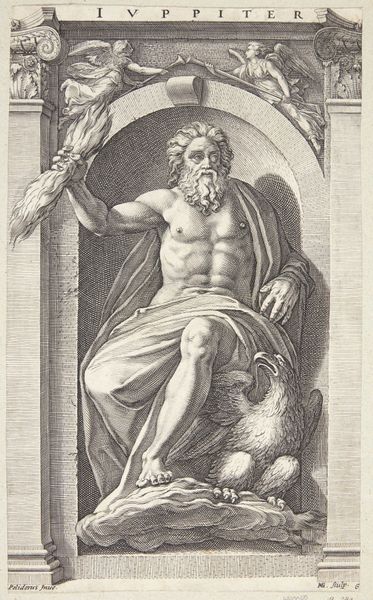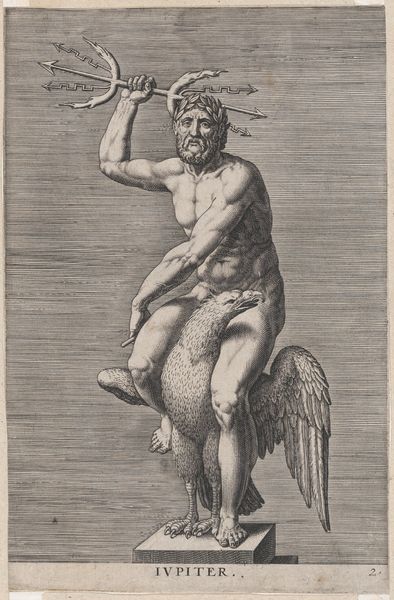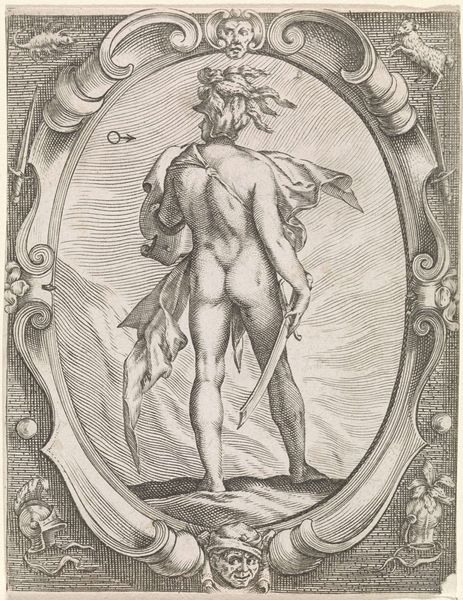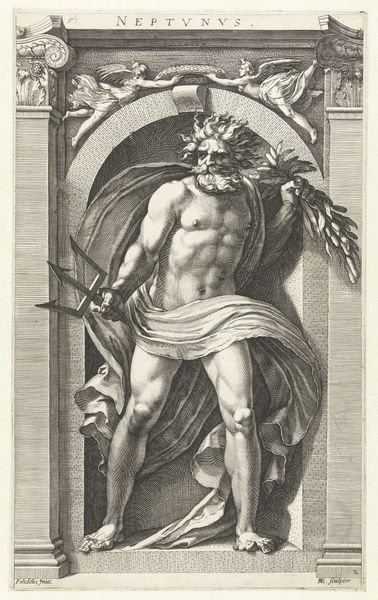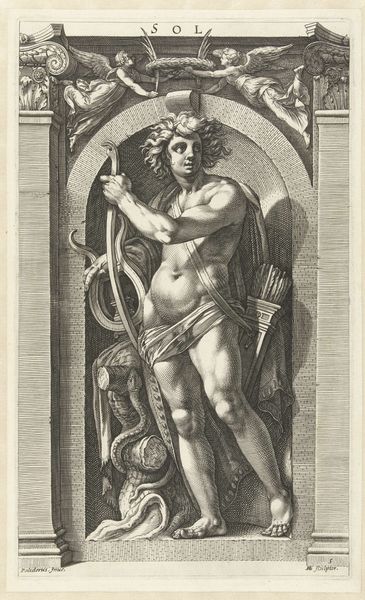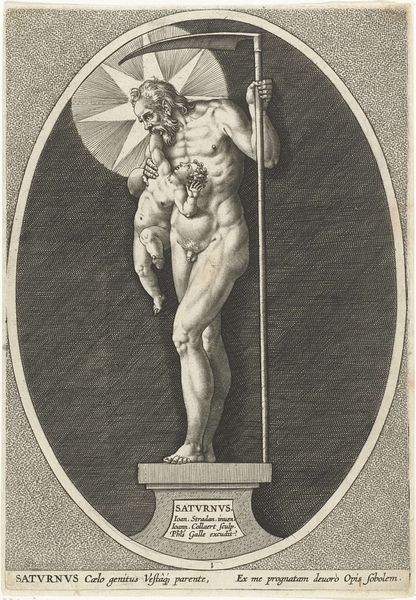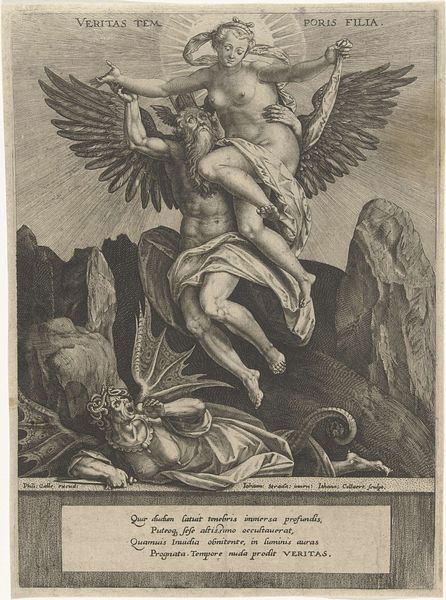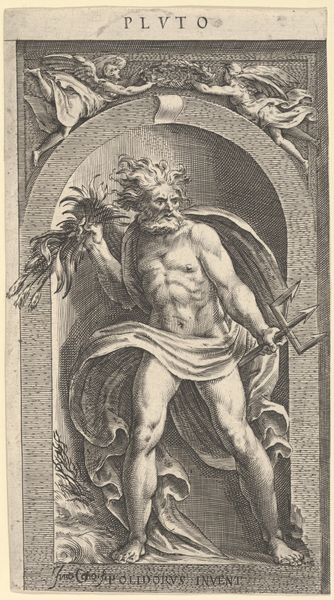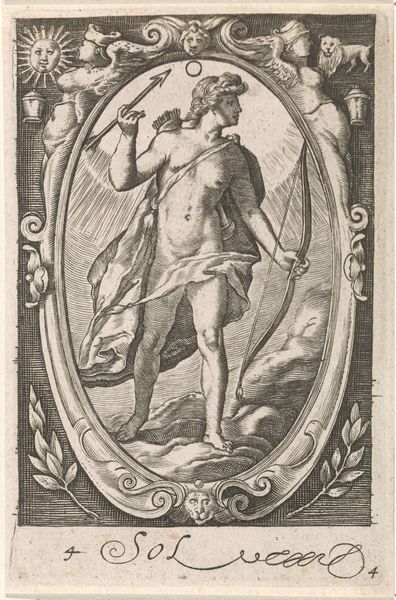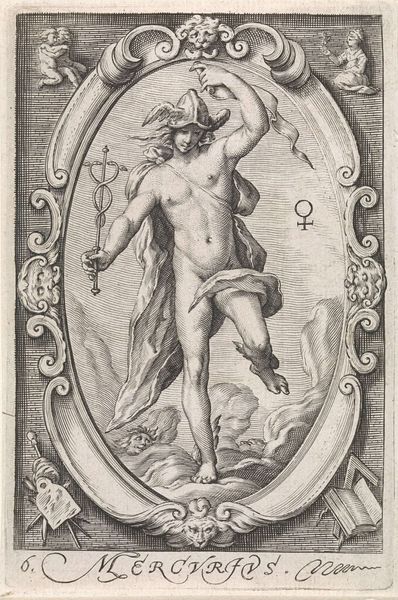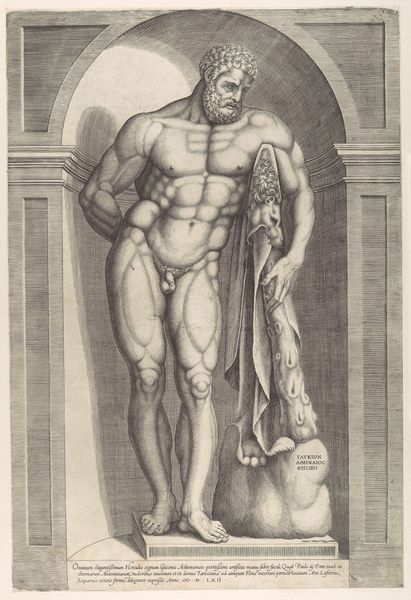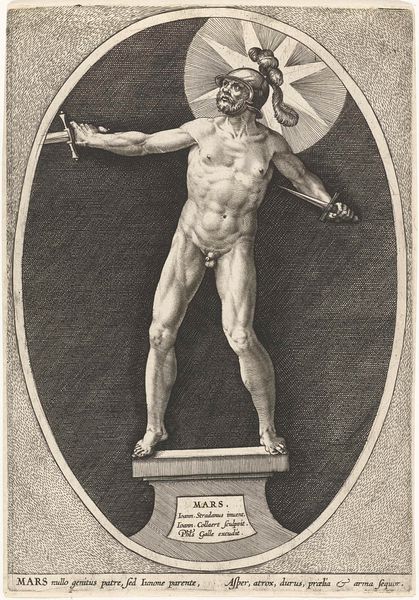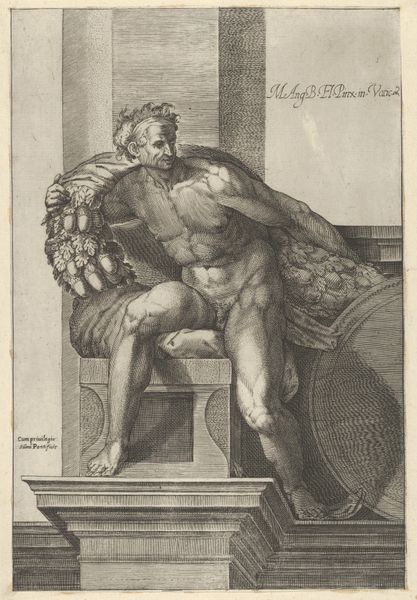
print, engraving
#
portrait
#
pencil drawn
#
allegory
# print
#
pencil sketch
#
old engraving style
#
mannerism
#
figuration
#
pencil drawing
#
portrait drawing
#
history-painting
#
engraving
Dimensions: height 199 mm, width 138 mm
Copyright: Rijks Museum: Open Domain
Jan Collaert II created this engraving of Jupiter, the Roman king of the gods, sometime between 1566 and 1628. Encapsulated within an oval frame, the god sits atop an eagle, itself perched on a pedestal, creating a composition of hierarchical forms. Note how the radiating lines behind Jupiter function almost like an aura, emphasizing his divinity and power. The engraving's structure presents a fascinating interplay between classical mythology and the visual language of the 16th century. Collaert uses line and form to convey not just an image of a deity, but also to communicate ideas about power, order, and the cosmos. The eagle and the pedestal are signs which add layers to the work's meaning. Jupiter's erect posture and the symbolic items enhance his status, while the eagle suggests the power to survey all. Consider the oval frame, too. This boundary serves to focus our attention, but it also highlights the constructed nature of the image itself. Collaert's expert use of line and composition transforms a mythological figure into a complex statement about representation and authority. The engraving invites us to interpret the signs and symbols within a broader cultural context, and shows how a symbolic form, with expert craftsmanship, creates meaning.
Comments
No comments
Be the first to comment and join the conversation on the ultimate creative platform.
